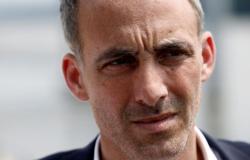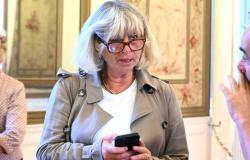Archaeology of places
File of Focals No. 12, linked to a planned international conference
on Thursday 13 and Friday 14 November 2025 in Saint-Étienne and Lyon.
As early as 1978, Pierre Nora noted that “history is now written under the pressure of collective memories” which seek to “compensate for the historical uprooting of the social and the anxiety of the future by the valorization of a past which “was not previously experienced as such.” “Places of memory” are therefore multiplying, which the historian defines as sites or material objects which are invested by certain communities in order to embody moments of a shared history.
The ever-increasing propensity for the heritageization of certain places where tragic episodes took place has been approached – in a distanced, even critical manner – by certain contemporary photographers. This is how, in a beautiful work published in 1993, the German Reinhard Matz brings together views which thematize the passage of time on the vestiges of Nazism, by juxtaposing with the material remains of the industry of death the current arrangements of certain camps for museum purposes: the buildings used for detention and extermination rub shoulders, in his photographs, with explanatory labels, refreshment bars and parking lots full of coaches. As for Ambroise Tézenaz, he tends to stigmatize “desolation tourism” oriented towards destinations where war crimes, natural or technological accidents have occurred. It is the fetishization and commodification of relics of the past that are therefore denounced.
An increased thirst for memory is also expressed through the renewed interest in ruins and abandoned sites which is manifested in the practice ofurbex : increasingly oriented towards sharing on networks, the images produced give new visibility to disused sites and participate in a conception of “heritage as experience”, as defined by Jean-Louis Tornatore. In the works of contemporary photographers, the exploration and representation of vestiges of a relatively recent past also questions the consistency of the present. Yves Marchand and Romain Meffre, Thomas Jorion and many others produce photographs which take up certain codes of picturesqueness and the aesthetics of ruins inherited from the 18th century, but also reflect an upheaval in our relationship to time and a fear of the future. Their works reflect the loss of the utopias of progress that have inhabited modernity and can allow us to think about the advent of a new presentist “regime of historicity”, defined by François Hartog.
However, the traces of the past do not always impose themselves on the eye, or even sometimes refuse to those who seek them, so that certain photographers are today developing real excavation strategies in order to try to reconstruct the stories that are escaping. . They look for clues, collect information from archives, read works in order to document themselves, conduct interviews with informed people… This is what Mathieu Pernot does in A camp for gypsies (2001), Arno Gisinger in HK. Destins / Fates (2021), Laïa Abril in On Abortion (2016) et On Rape (2022) or Martin Barzilai in Ghost Cemetery: Thessaloniki (2023). If these artists mobilize ways of doing things that are similar to those of researchers in the human and social sciences, their works deviate from academic work, to the extent that they allow themselves more freedom, even fantasy: they mobilize the Imagination and intuition (when scientists are supposed to forbid it), sometimes accommodate themselves to plausibility. Their works, constructed in the form of stories and likely to contain an element of fiction, thus question the research methods of historians and intersect with questions of an epistemological nature today formulated by academics such as Philippe Artières or Ivan Jablonka. The devices proposed by these artists often provide a form of dialogism (in the sense that Mikhail Bakhtin gave to this term) between the different assembled elements, which illuminate and influence each other, in order to encourage the viewer to think for themselves. -even.
The international conference planned for November 2025 and the journal’s dossier will examine the different ways in which contemporary photographic practices participate in the renewal of a writing of history. Focals which will result from it.
Submission conditions
Contribution proposals (3,000 characters maximum) will be accompanied by a bibliography, a brief bio-bibliographic notice (1,000 characters maximum) and the author’s email address. They must reach no later than January 15, 2025 to: Thaïva Ouaki ([email protected]), Jonathan Tichit ([email protected])
and Danièle Méaux ([email protected]).
Acceptance of the proposals will be notified at the end of February 2025.
steering Committee
Anne-Céline Callens (ECLLA, University of Saint-Etienne)
Danièle Méaux (ECLLA, University of Saint-Étienne)
Julie Noirot (Passages XX-XXI, University of Lyon 2)
Thaïva Ouaki (ECLLA, University of Saint-Etienne)
Jonathan Tichit (ECLLA, University of Saint-Etienne)
Scientific Committee
Philippe Bazin (National School of Art of Dijon)
Jan Baetens (LGC, KU Leuven)
Raphaële Bertho (INTRU, University of Tours)
Pascale Borrel (PTAC, University of Rennes 2)
Nathalie Boulouch (History and art criticism, Rennes 2 University)
Christine Buignet (LESA, Aix-Marseille University)
Anne-Céline Callens (ECLLA, University of Saint-Étienne)
Laurence Corbel (PTAC, University of Rennes 2)
Véronique Figini (Louis Lumière National School)
Christian Joschke (National School of Fine Arts, Paris)
Vincent Lavoie (University of Quebec in Montreal)
Danièle Méaux (ECLLA, University of Saint-Étienne)
Julie Noirot (Passages XX-XXI, University of Lyon 2)
Philippe Ortel (TELEM, Bordeaux-Montaigne University)
Suzanne Paquet (University of Montreal)
Olga Smith (Newcastle University)
Bernd Stiegler (LKM, University of Konstanz)
Alexander Streitberger (LGC and CERTA, Catholic University of Louvain)
Kim Timby (Ecole du Louvre)
Hilde Van Gelder (LGC, KU Leuven)
Dominique Versavel (National Library of France)






